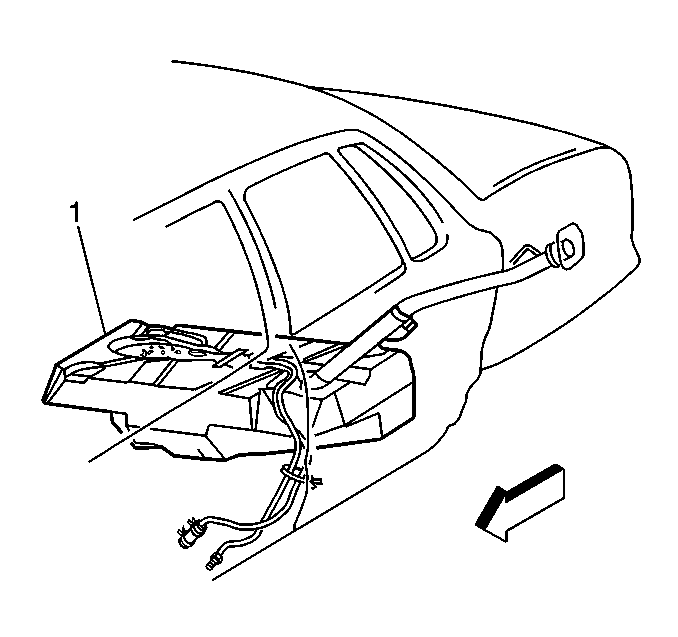Caution: Do not drain the fuel into an open container. Never store the fuel in an open container due to the possibility of a fire or an explosion.
Caution: Drain the fuel tank to at least 3/4 of a tank before removing the fuel sender retaining ring or fuel sender access panel in order to avoid possible fuel spillage. Failing to follow this procedure could result in personal injury.
Notice: Drain the fuel tank with a hose which has a 13 mm (0.5 in) or smaller diameter in order to prevent the drain hose from getting stuck inside the fuel tank filler neck pipe check valve. Damage to the check valve may result.
Notice: Drain the fuel from the complete system, including injector nozzle(s), the fuel pump, all fuel pipes, and the fuel tank if a vehicle is to be stored for any appreciable length of time. Draining the fuel will prevent the formations of fuel system deposits.
- Remove the rear seat cushion. Refer to Rear Seat Cushion Replacement in Seats.
- Disconnect the negative battery cable. Refer to Battery Negative Cable Disconnection and Connection in Engine Electrical.
- Remove the fuel tank filler pipe cap (1).
- Drain the fuel in the fuel tank (1) through the fuel tank filler pipe by using a hand operated fuel pump device.
- Reinstall the fuel tank filler pipe cap (1).
- Connect the negative battery cable. Refer to Battery Negative Cable Disconnection and Connection in Engine Electrical.
- Install the rear seat cushion. Refer to Rear Seat Cushion Replacement in Seats.
- Install the intake manifold sight shield.
Caution: Unless directed otherwise, the ignition and start switch must be in the OFF or LOCK position, and all electrical loads must be OFF before servicing any electrical component. Disconnect the negative battery cable to prevent an electrical spark should a tool or equipment come in contact with an exposed electrical terminal. Failure to follow these precautions may result in personal injury and/or damage to the vehicle or its components.



Notice: Use the correct fastener in the correct location. Replacement fasteners must be the correct part number for that application. Fasteners requiring replacement or fasteners requiring the use of thread locking compound or sealant are identified in the service procedure. Do not use paints, lubricants, or corrosion inhibitors on fasteners or fastener joint surfaces unless specified. These coatings affect fastener torque and joint clamping force and may damage the fastener. Use the correct tightening sequence and specifications when installing fasteners in order to avoid damage to parts and systems.
Tighten
Tighten the intake manifold nuts to 3 N·m (27 lb in).
